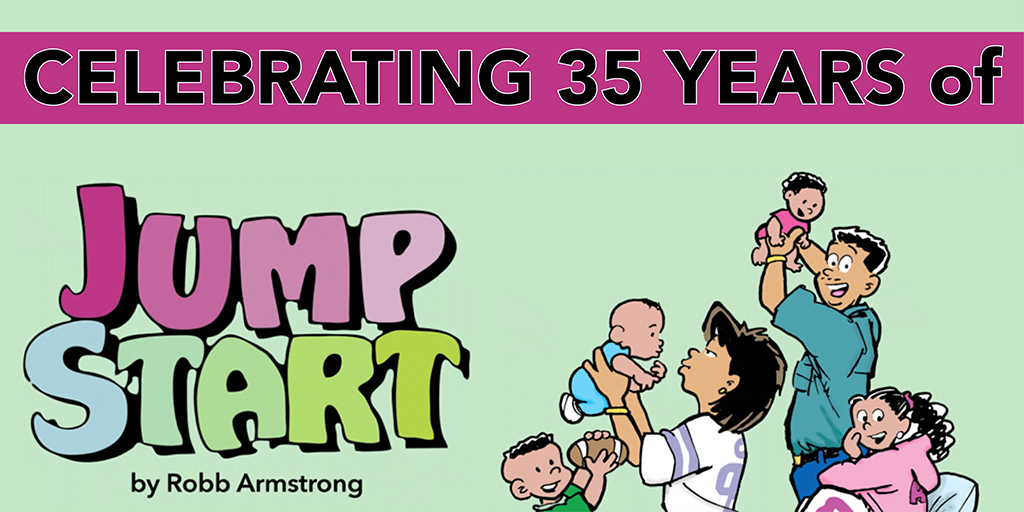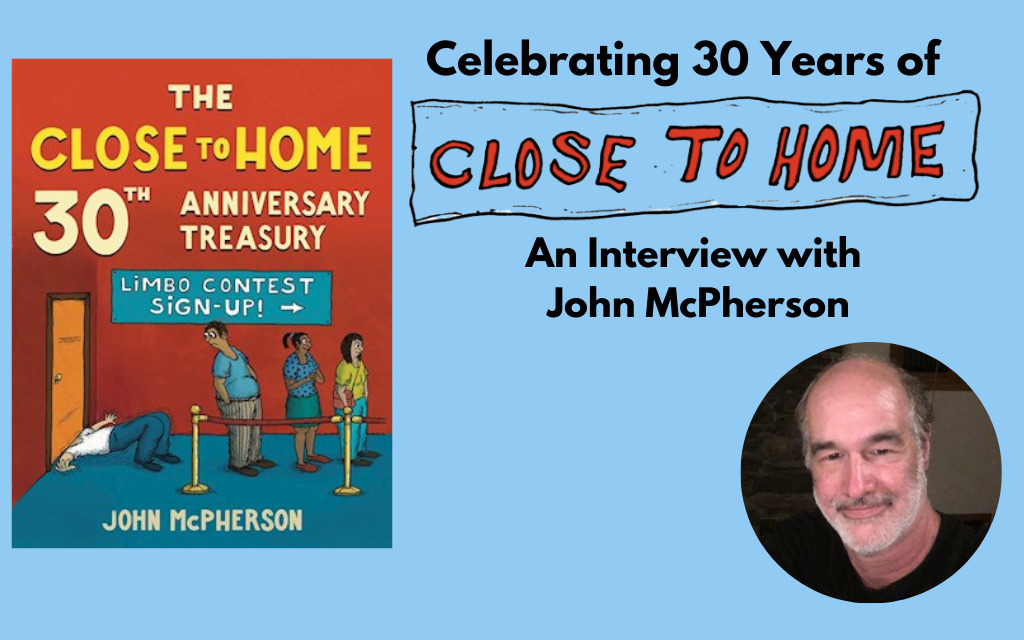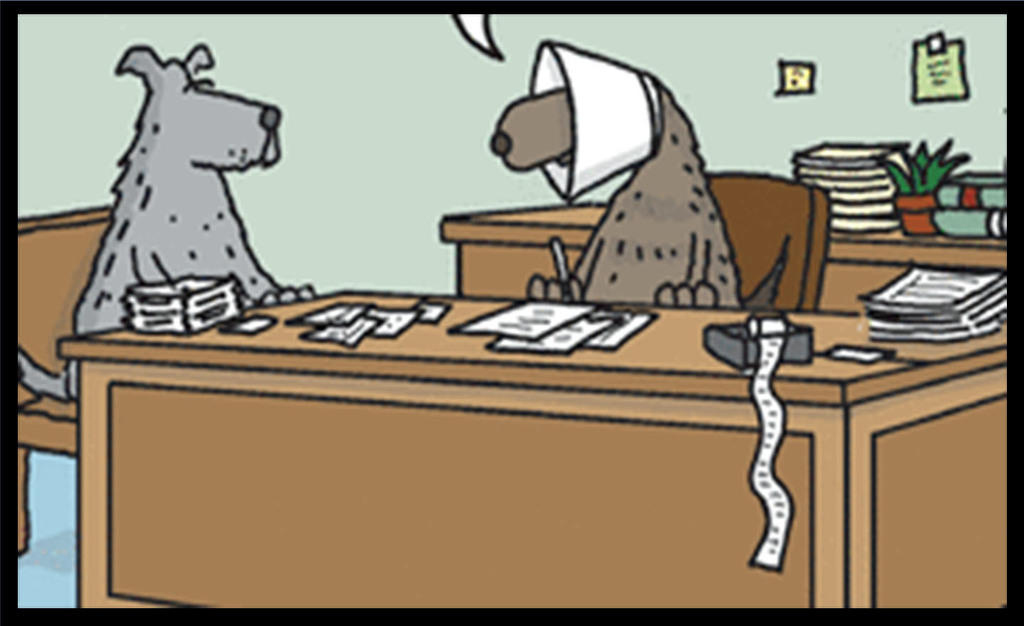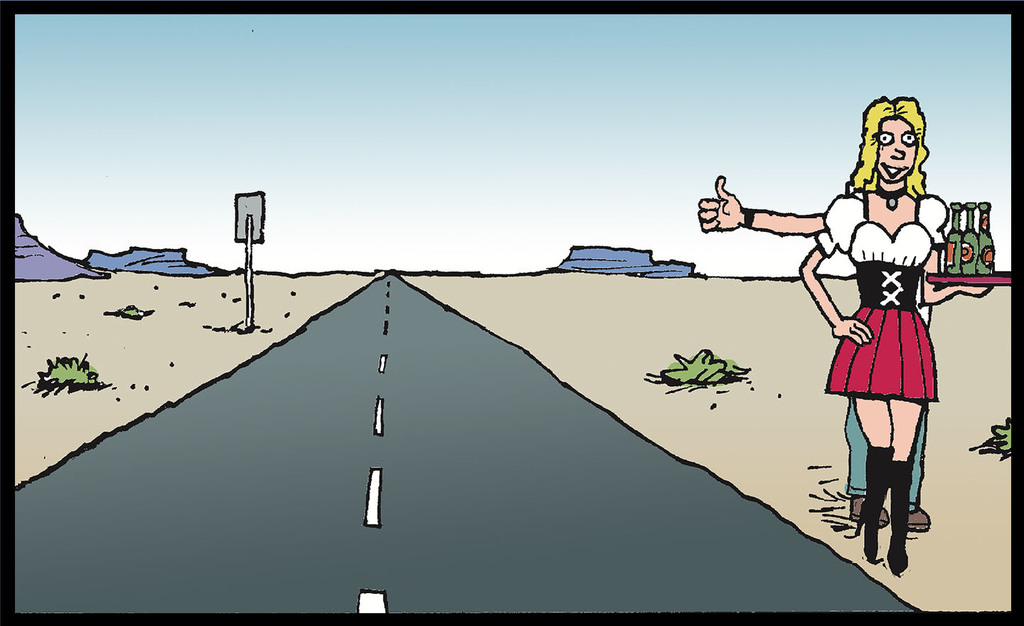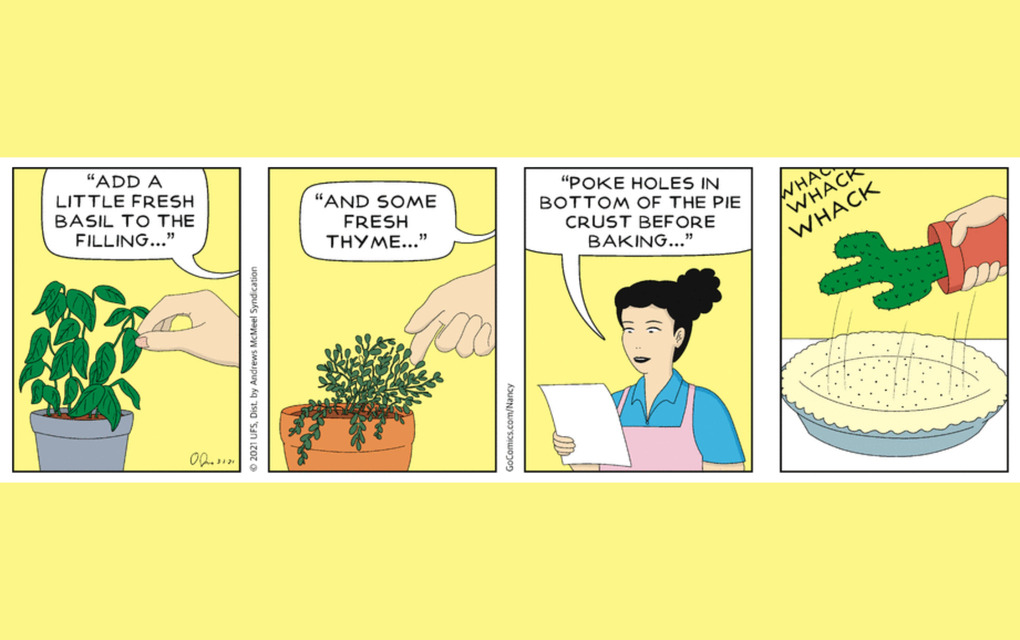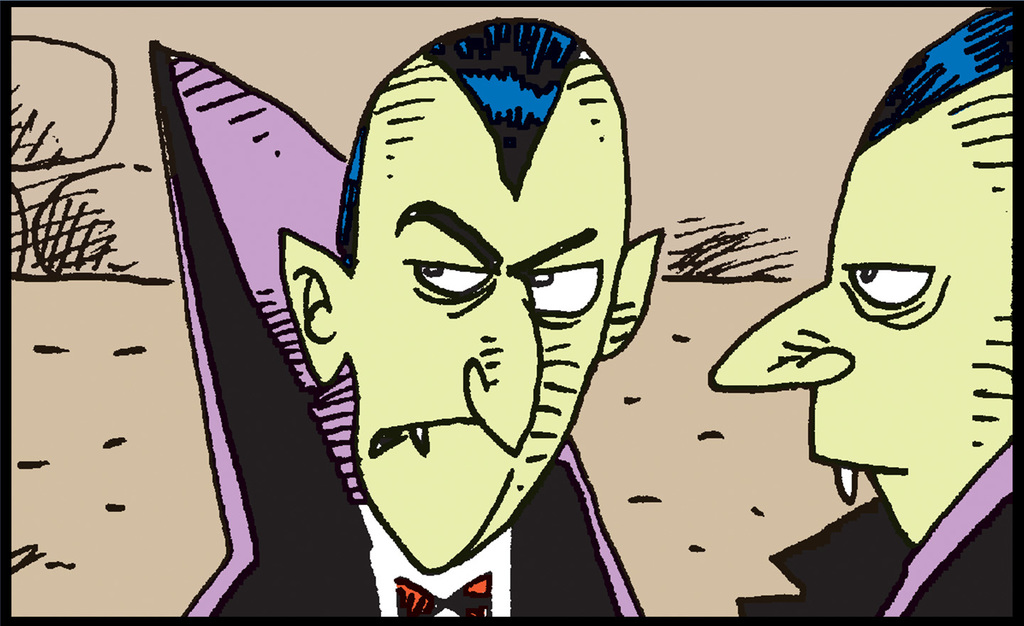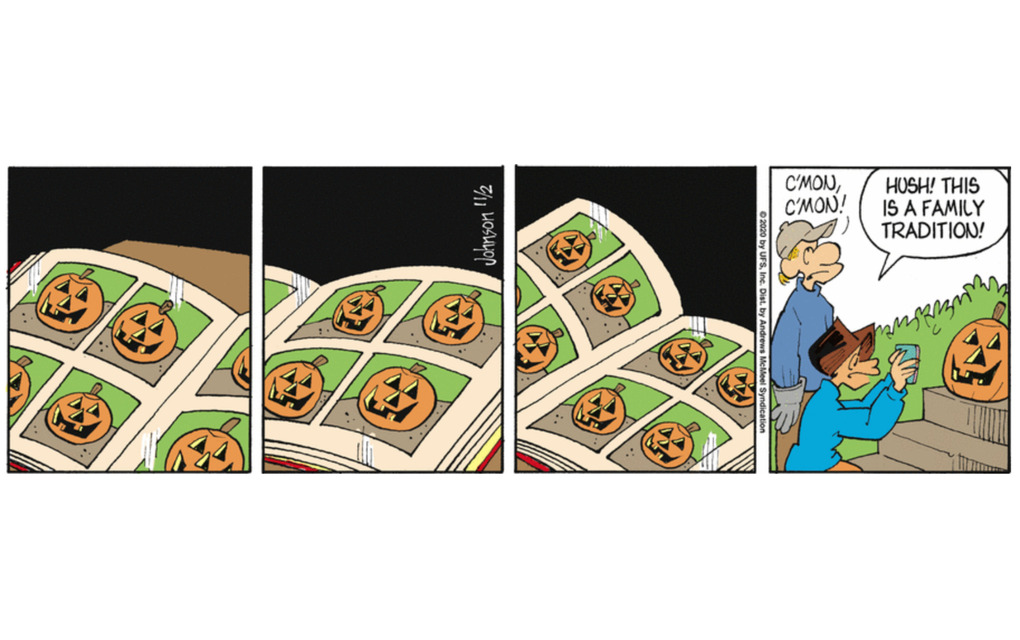John McPherson (Close to Home)
by GoComicsThe GoComics "Meet Your Creator" series brings you firsthand insight into the lives and careers of your favorite cartoonists. Each week, we hand over the keys to one of our talented creators, who share their inspirations, achievements, creative processes, studios and more! Read on to hear from this week's featured cartoonist: John McPherson of Close to Home
Most of the cartoonists I've ever met tell me that they knew they wanted to be a cartoonist since they were very young. The inspiration did not hit me until I was about 24 and out of college and out of work. I got my degree in mechanical engineering in 1983 from Bucknell University at a time when jobs for engineers were scarce. It was during that time of job searching that I started playing around with cartooning.
I always loved comics as a kid and read the funny pages voraciously. Though I did follow some strips, I always gravitated toward single-panel cartoons because I liked the immediacy of the humor of single-panels. As a kid, I liked Grin and Bear It, Herman and anything by Charles Addams. Later, I loved The Far Side. For a few years in college, I started having cartoon ideas pop into my head and started writing them down in my college notebooks. I was very eager to see my ideas drawn up and thought of sending them off to a cartoonist to see if he or she would put them on paper. But, I didn't know any cartoonists, so I was left to my own devices. I had no art experience at all; nonetheless, I sat down one day and forced myself to draw. I picked out my favorite idea and drew it up. It took me about eight hours to finish it, and when I got done, it looked like a chimpanzee hyped up on caffeine had done. Nevertheless, it felt great to see it on paper.
So I drew up another, and another. And after a few weeks, I had a dozen cartoons completed. I made photocopies of them and sent them off to a small newspaper that ran twice a month in a nearby town. To my amazement, they liked my stuff, and agreed to run one cartoon an issue, for a whopping $5 a month. I remember running to a newsstand to see that first cartoon in print. That is one of the great things about cartooning: There have been so many highlights along the way.
After I broke into that paper, I started churning out more cartoons and began sending them off to magazines, which pay much better than $5 a cartoon. I used the book "The Artist's Market" to find magazines and would mail about eight cartoons along with a self-addressed, stamped envelope, and off they would go. I sent out 150 batches of cartoons and got 150 straight rejection letters. But I really didn't care - I was having so much fun cartooning that getting something into a magazine would have just been icing on the cake.
After a year and a half of sending out cartoons, I finally got two accepted in Campus Life Magazine, a monthly magazine for high school and college students. Campus Life paid me $50 each, and to get a hundred bucks for two cartoons felt great. From there on out, I became a regular contributor to Campus Life. Their editor, Chris Lutes, gave me lots of freedom to be really out there and explore the crazy side of teenage life. Within a year, they were running full-page layouts of my cartoons on various teen themes. It gave me great exposure and a nice side income.
I found that once I had broken the ice with Campus Life, it was much easier to break into other magazines. The visibility that I got with Campus Life also resulted in editors from other magazines contacting me to work for them. I soon got into another teen magazine called Breakaway, and started writing a monthly humor column and drew a comic strip, The Adventures of Buck Felner. It was nice to be doing some writing and a fun shift to do a comic strip, which is SO different than doing a panel. Around the same time, I got into Yankeee magazine. Yankee paid $100 a cartoon and was a national newsstand magazine, which gave me more great exposure. I quickly added The Saturday Evening Post to the mix, which continues to be a great outlet for panel cartoonists.
From 1985 to 1987, I worked my way into about 40 publications on a regular basis. I also lined up several assignments doing book illustration, which was a lot of fun. It was nice to be able to just focus on drawing and not have to worry as much about the humor when I did illustration work. The illustration work also paid very well.
By 1990, I was making more money moonlighting as a cartoonist than I was at my engineering job, and was having a blast at it. So I started to think seriously about leaving my engineering job. One day, I just made the decision to go full-time as a cartoonist. I would be giving up a steady paycheck and lots of benefits, but I loved the freedom and creativity of cartooning and knew that was where I wanted to go. In July 1990, at age 30, I quit my day job and never looked back.
Things went well right from the start. I continued to pick up new magazines. I found it best to simply call editors and art directors rather than writing, and to this day, I use that method to break into markets. Somehow, making that voice connection opens doors much better than a letter does.
I freelanced for two years and loved not having to go into an office and calling my own shots - it was just really fun. I loved working with different editors, having the phone ring with new assignments and juggling the different projects. Always a new horizon to reach for.
In 1992, I approached two syndicates about starting a panel feature and was very fortunate to get offers from both of them. Creators and Universal each offered me a contract, but I quickly made the decision to go with Universal since I admired so many of the strips that it carried. It was a great decision as it continues to be a fantastic partner in the business and just a tremendous organization.
Close To Home launched in 55 papers in November 1992, and Universal did a really nice job of growing the feature. It continues to be a really fun career, despite the challenges that papers are facing.


